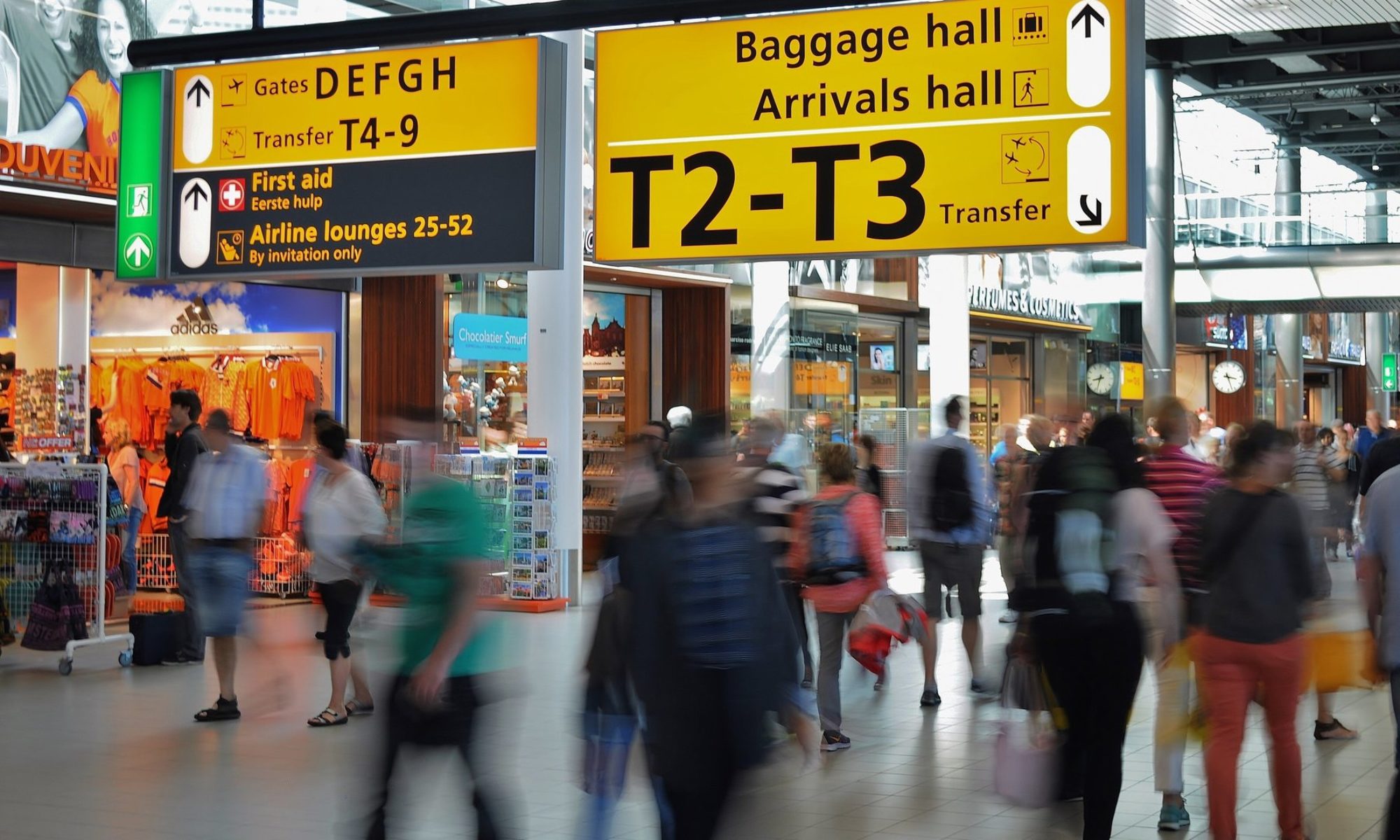 Montréal, 9 September 2016 – Airports Council International (ACI) has released the 2015 ACI World Airport Traffic Report. With comprehensive data coverage for over 2,300 airports in 160 countries worldwide, ACI’s flagship publication remains the authoritative source and industry reference for the latest airport traffic data, rankings and trends on air transport demand.
Montréal, 9 September 2016 – Airports Council International (ACI) has released the 2015 ACI World Airport Traffic Report. With comprehensive data coverage for over 2,300 airports in 160 countries worldwide, ACI’s flagship publication remains the authoritative source and industry reference for the latest airport traffic data, rankings and trends on air transport demand.
Global analysis
Persistence and resilience are two themes that best describe air transport demand in 2015. The large increase in passenger traffic of 6.4% represents the strongest growth rate since 2010 (6.6%), the year in which it rebounded from the Great Recession. In fact, despite a slight weakening of economic growth at 3.1% in 2015, growth in passenger traffic approached the pre-recessionary growth levels that were seen in 2004 to 2007. International tourism in particular was irrepressible in 2015, even considering the geopolitical risks that persisted in certain parts of the world, such as Eastern Europe and the Middle East. By and large, the international traveller appears to have discounted these risks. Air cargo markets were weaker compared with passenger markets, achieving a modest 2.6% growth in total volumes for 2015. This was the result of subdued growth in emerging markets and developing economies, coupled with a more modest recovery in advanced economies.
World’s busiest airports
While there were 16 airports with over 40 million passengers in 2005, this number has more than doubled and risen to a total of 37 airports by 2015. Collectively, the club of airports has achieved a growth of 6% year-over-year in passenger traffic for 2015. This level of growth is unprecedented, particularly since a majority of the airports in this category are from the typical mature markets of North America and Europe. After years of consolidation and capacity discipline on the part of US-based airlines, North America has experienced an important resurgence in air transport demand, particularly at many of its large hubs. Where physical capacity and infrastructure could accommodate, the so-called mature market’s recent upsurge in traffic are further reminders that higher growth in throughput above historical trends is still possible in these markets. Both airlines and airport operators have expanded and optimized their capacity in order to accommodate the demand for air transport. In addition, the widespread entry of low-cost carriers in these markets has heightened competition, offering affordable options to stimulate air transport demand irrespective of the uncertainty in global economic conditions.
Emerging markets
On the back of a growing middle class in key emerging markets, the significant growth of intercontinental hubs in Asia-Pacific and the Middle East reveals that air transport’s nucleus continues to move eastward. Despite the slowing of economic growth in China, its move away from an investment led economy to a consumption driven economy will further stimulate air transport demand over the long run. India is also poised to be one of the largest aviation markets in the world in the years to come. The combination of a move towards a more liberalized aviation market coupled with stronger economic fundamentals has helped to awaken the Bengal tiger to become one of the fastest growing markets in the world. However, there is heterogeneous growth across key emerging markets. Adverse macroeconomic conditions and a weakening of commodities such as oil have left both Brazil and Russia in a recessionary state.
2016 outlook
“It is important to maintain cautious optimism as we navigate through 2016,” Gittens concluded. “There are several impediments that could curtail the continued rise in demand, which could potentially encumber growth prospects over the short- and medium-terms. Specifically, these are related to geo-political unrest, terrorisms and threats to security in certain parts of the world. Physical capacity considerations and potential bottlenecks in air transport infrastructure also pose challenges in accommodating future air transport demand. Finally, protectionist policies that retreat from further economic integration and air transport liberalization could have adverse contractionary effects on the air transport industry. Irrespective of the challenges that lay ahead, by and large, the evidence of history supports the long run resiliency of the industry where connecting people, places, cultures and commerce is paramount in the shared mission of the aviation community.”
Key statistics in brief
Passenger traffic
Worldwide airport passenger numbers increased 6.4% in 2015 to almost 7.2 billion, registering increases in all six regions.
The top spot in the busiest airports list for 2015 continued to belong to Atlanta-Hartsfield-Jackson (ATL). Growing 5.5% year-over-year in passenger traffic to the record-breaking total of over 100 million passengers in 2015, Atlanta has benefitted tremendously from its strategic location as a major connecting hub and port of entry into North America. The airport is within a two-hour flight of 80% of population in the United States.
Airport traffic in emerging markets and developing economies grew faster (8.1%) than in advanced economies (5.2%) in 2015, with emerging markets reaching a 44% share of global passenger traffic.
During 2015, the highest number of passengers went through airports in the Asia-Pacific region:
Asia-Pacific (2.46 billion, up 8.6% over 2014)
Europe (1.93 billion, up 5.2% over 2014)
North America (1.72 billion, up 5.3% over 2014)
Latin America-Caribbean (571 million, up 5.3% over 2014)
Middle East (334 million, up 9.6% over 2014)
Africa (180 million, up 0.6% over 2014)
With over 1.5 billion passengers, BRICS countries (Brazil, Russia, India, China and South Africa), which represent 21.4% of global passenger traffic, achieved a strong growth of 8.2% in passenger traffic. MINT countries (Mexico, Indonesia, Nigeria and Turkey) achieved a 5.5% increase for passenger traffic in 2015.
The world’s top 30 airport cities handled almost one-third of global passenger traffic. London remained the world’s largest airport system with over 155 million passengers handled at six airports. New York maintained the second position with 123 million passengers at three airports. Tokyo was the third city market with 113 million passengers.
The world’s busiest international airports (measured by international passenger traffic):
Dubai, United Arab Emirates – DXB (77.5 million, up 10.7% over 2014)
London, United Kingdom – LHR (69.8 million, up 2.5% over 2014)
Hong Kong, China – HKG (68.1 million, up 8.2% over 2014)
The world’s busiest domestic airports (measured by domestic passenger traffic):
Atlanta GA, USA – ATL (90.3 million, up 5.7% over 2014)
Beijing, China (People’s Republic of China) – PEK (71.3 million, up 3.0% over 2014)
Chicago IL, USA – ORD (65.9 million, up 11.2% over 2014)
Air cargo traffic
Worldwide airport cargo increased by 2.6% in 2015 to 106 million metric tonnes, with mixed levels of growth across all six regions.
Hong Kong (HKG) and Memphis (MEM) took the first and second ranks respectively for the busiest air cargo airports with 4.5 and 4.3 million metric tonnes in 2015.
Airports in the Asia-Pacific region handled the largest amount of air cargo during 2015:
Asia-Pacific (41.1 million metric tonnes, up 2.3% over 2014)
North America (30 million metric tonnes, up 3.1% over 2014)
Europe (18.9 million metric tonnes, up 0.5% over 2014)
Middle East (8.5 million metric tonnes, up 9.9% over 2014)
Latin America-Caribbean (4.9 million metric tonnes, down 1.3% over 2014)
Africa (2.1 million metric tonnes, up 3.5% over 2014)
The world’s air cargo market is highly concentrated, with the top 30 air cargo hubs[1] handling 58% of global air cargo volumes. Hong Kong and Memphis remained the busiest airports in terms of air cargo traffic (4.46 and 4.29 million metric tonnes of cargo respectively). The two Shanghai airports—Pudong (PVG) and Hongqiao (SHA)—handle 3.71 million tonnes combined, taking the third position in the air cargo hubs ranking.
The world’s busiest international airports (measured by international freight traffic):
Hong Kong, China – HKG (4.38 million metric tonnes, up 0.1% over 2014)
Dubai, United Arab Emirates – DXB (2.51 million metric tonnes, up 3.4% over 2014)
Incheon, Korea (Republic of Korea) – ICN (2.49 million metric tonnes, up 0.6% over 2014)
The world’s busiest domestic airports (measured by domestic freight traffic):
Memphis TN, USA – MEM (4.1 million metric tonnes, up 1.4% over 2014)
Louisville KY, USA – SDF (1.8 million metric tonnes, up 3% over 2014)
Beijing, China (People’s Republic of China) – PEK (1.2 million metric tonnes, up 3.9% over 2014)
Aircraft movements
Worldwide aircraft movements increased by 2% in 2015 to 88.5 million, with mixed levels of growth across all six regions.
Atlanta (ATL) regained its position and became the busiest airport in terms of aircraft movements, followed by Chicago (ORD) and Dallas/Fort Worth (DFW).
Airports in the North American region recorded the highest number of movements during 2015:
North America (30.1 million, up 0.3% over 2014)
Europe (22.8 million, up 1.8% over 2014)
Asia-Pacific (21 million, up 5.8% over 2014)
Latin America-Caribbean (8.9 million, down 0.9% over 2014)
Africa (3 million, down 1.4% over 2014)
Middle East (2.7 million, up 6.9% over 2014)
Suplementary Tables:

Source: Communications ACI World

